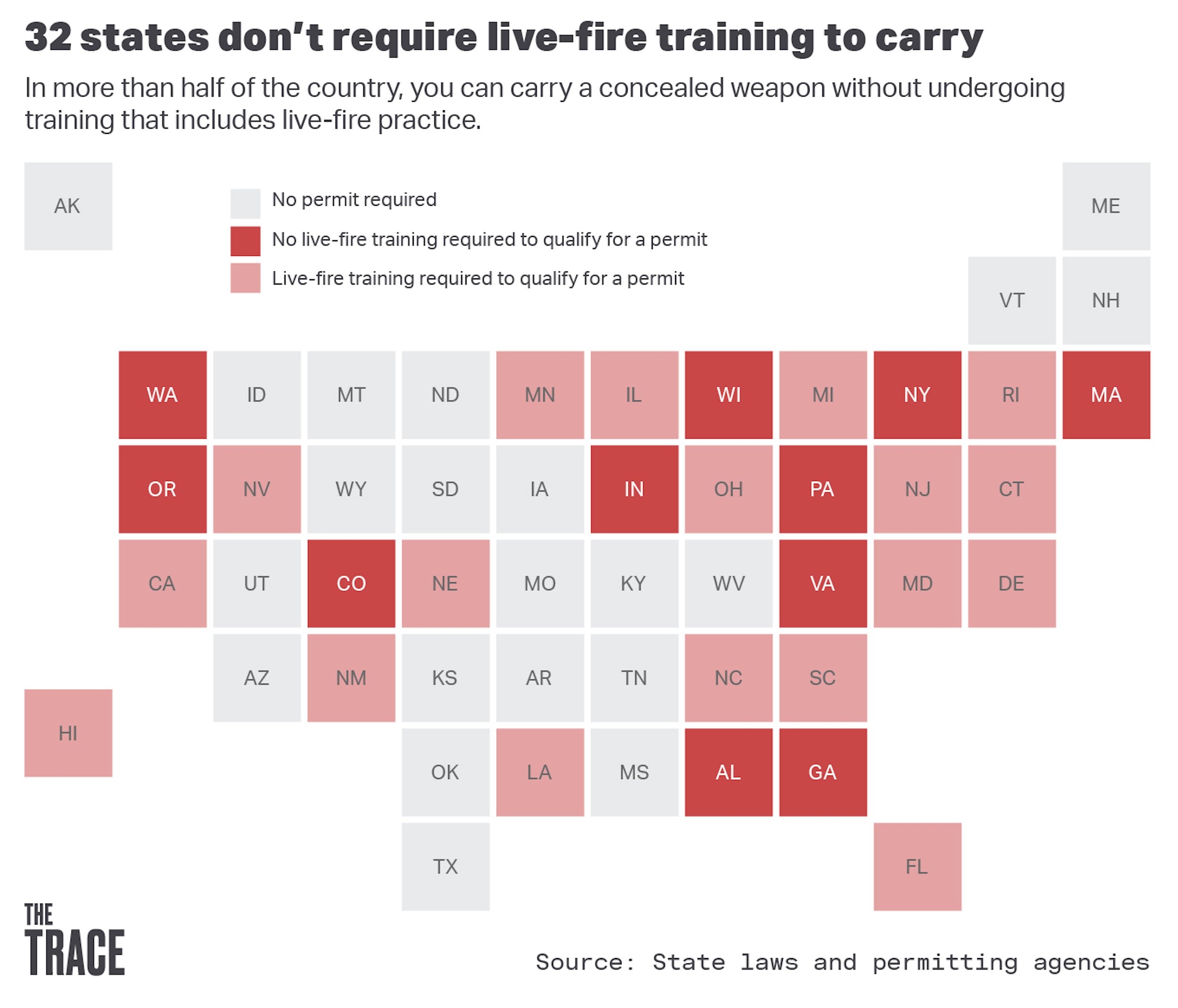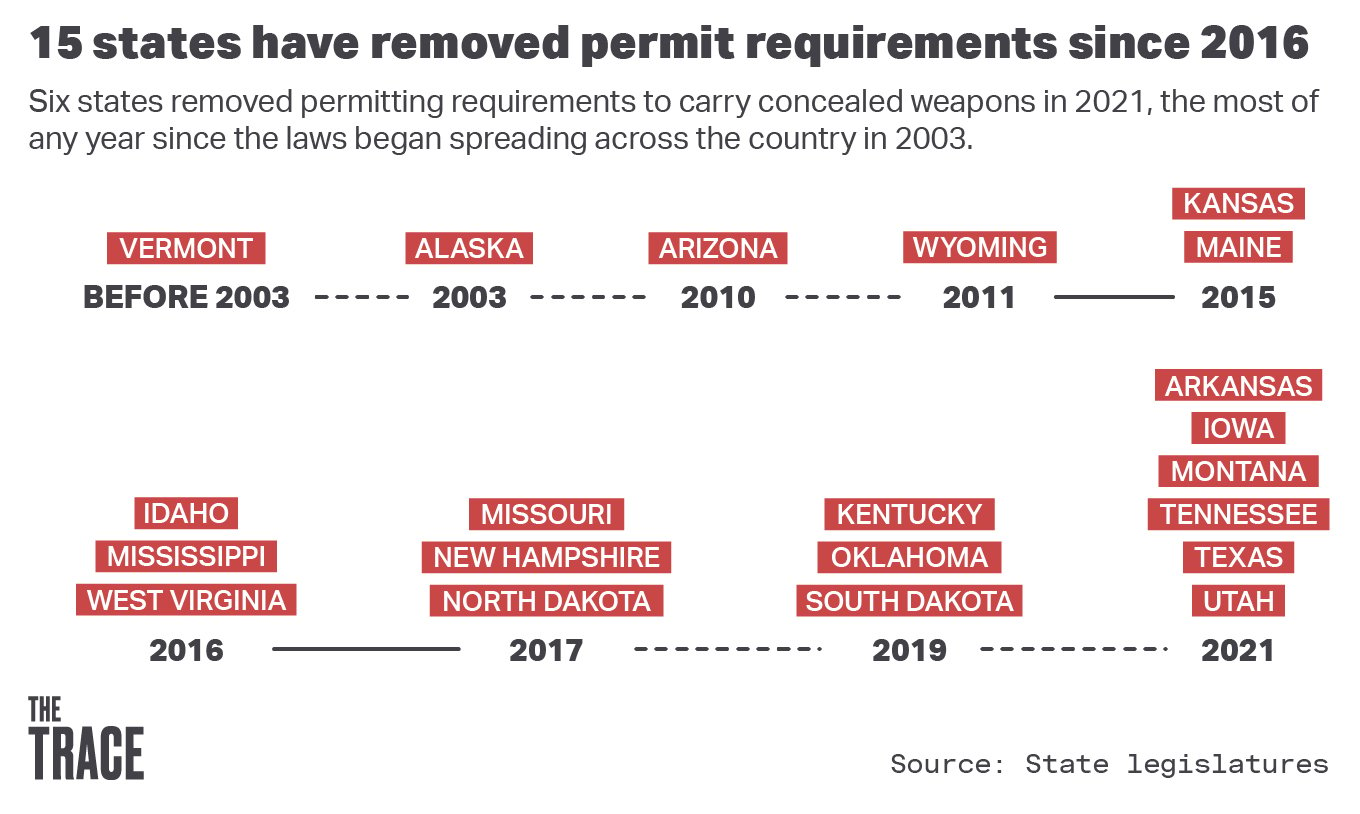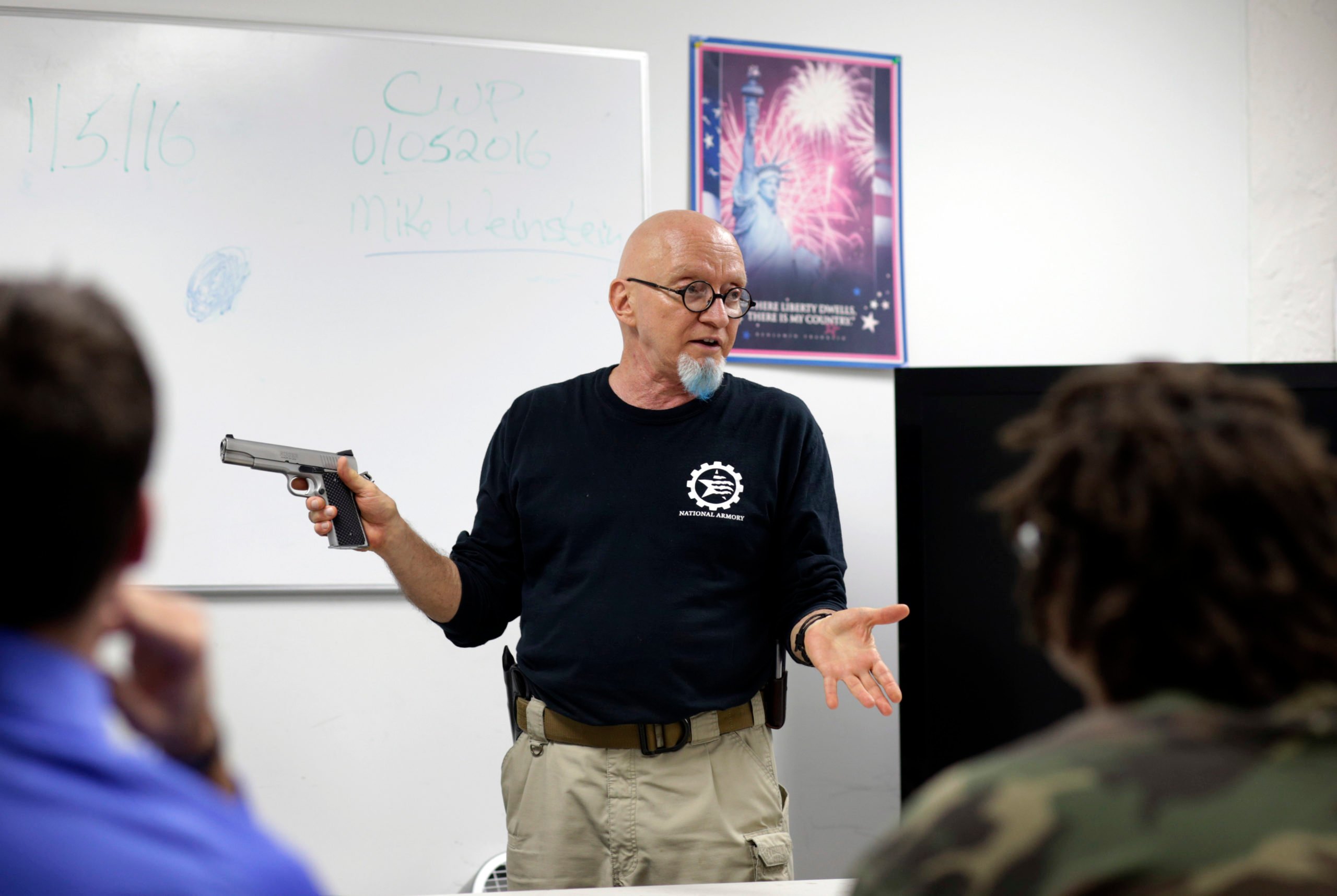In December, Florida Governor Ron DeSantis backed legislation to eliminate the licensing requirement for carrying concealed guns. So-called permitless carry bills have been filed in the GOP-dominated Florida Legislature every year since 2018, but the policy has never generated enough support to become law. If it passes this time, Floridians will no longer need a license to carry a concealed handgun — nor will they need to take a firearms safety course and demonstrate that they can fire a gun.
DeSantis’s support for the change, captured on video, reflects a nationwide shift in gun politics. As of January 2022, the Sunshine State was one of only 18 that require “live-fire” training to carry guns in public, according to a review by The Trace. That’s down from 24 in 2016, when we first conducted this survey.

Concealed carry permits are issued by states and counties, and there are no national standards to obtain one. To compile our breakdown of live-fire requirements, we examined state statutes covering concealed carry licensing. When the law wasn’t clear, we reached out to state officials to confirm their policies. What emerged was a patchwork of standards that lets gun owners with little to no experience tote deadly weapons in more of the country each year.
“The worst person that you can be around is a person who has a firearm and no training,” said Jerel Crew, who runs a firearms safety, training, and gun club in Philadelphia called That Gun Talk. “I like to teach people that every round that you miss your intended target with has an attorney’s name attached to it.”
Typically, gun laws in blue states are stricter than they are in red states. But the split on live-fire mandates does not necessarily follow the usual partisan divide. Florida, Louisiana, Nebraska, Ohio, North Carolina, and South Carolina all require live-fire training. But New York and Massachusetts — which require permits not only to carry a gun but also to purchase one — do not. Nor do Colorado, Oregon, and Washington State, all of which require background checks on every gun sale. Even New York City — where gun permit applicants must undergo a selective, months-long process involving letters of necessity, character references, and multiple interviews with police — does not require applicants to learn how to shoot a gun before they can get a permit.
When gun owners fail to learn safe storage and handling, unintentional shootings can result. “It is important for people to be responsible gun owners,” Crew said. “And being responsible looks like a few things: It looks like a person that wants to train, a person that continues to train.”
Unless laws require training, some gun owners won’t seek it out. University researchers who conducted a nationally representative survey in 2015 found that 39 percent of gun owners had never received formal firearms training, a proportion that hadn’t meaningfully changed since similar studies more than 20 years earlier. In Pennsylvania, where Crew teaches as an instructor certified by the U.S. Concealed Carry Association and the National Rifle Association, permit applicants aren’t required to undergo live-fire training. In his classes, which are typically at least six hours long, he teaches stance, grip, and trigger control, among many other safety fundamentals. But Crew believes prior training is only a basic necessity; regular practice and ongoing training are just as important.
In Kentucky, gun owners who wanted to carry a concealed firearm were required to undergo live-fire training until the state went permitless in 2019. For our first survey of training standards six years ago, a Kentucky firearms instructor told us that muscle memory is crucial for people to effectively respond to a threat when their adrenaline is pumping. “It takes 2,500 repetitions to pick up a pistol correctly,” he said.
State Representative Vincent Dixie of Tennessee, which scrapped its permitting requirement in 2021, said that before permitless carry was enacted, he warned the Legislature of the danger posed by inexperienced gun owners.
“I think it’s absurd that you have untrained people with an instrument that could take a life,” said Dixie, a Democrat. “Would you get into a car with someone who has never passed a driver’s license test and feel comfortable? If we ask people to have some training before they get behind the wheel, why shouldn’t we ask the same when they have a loaded gun that could take a life?”
Dixie argues that eradicating training requirements helps normalize deadly weapons in society, causing people to overlook the grave responsibilities that come with carrying a gun. Not requiring live-fire training, he says, runs counter to one of the gun rights movement’s major tenets: Trouble can come from anywhere, so people need to be prepared for self-defense. “You can’t properly defend yourself if you don’t know how to use a gun,” Dixie said.
Only six states had permitless carry at the time of our 2016 survey. But the gun rights movement has made it a priority to increase that number. It’s now up to 21 and could soon become 22 with the addition of Indiana, where the Republican-led state House passed a permitless carry bill on January 11.

Eleven other states are considering permitless carry bills of their own, according to a Trace analysis. Six of them require live-fire training for a concealed gun permit: Florida, Michigan, Nebraska, Ohio, and the Carolinas. If those states were to pass their bills, it would leave only 12 states with live-fire requirements.
At least one state has tightened its concealed carry training standards. California added a live-fire requirement in 2019; before that, training requirements were determined by county sheriffs, who issue permits in the state.
Crew, the firearms instructor, believes not having live-fire requirements is a bad idea. “I’m not there to instruct you. I’m not there to make sure that you’re safe,” he said. “I don’t trust it at all.”
Correction: An earlier version of this article misstated the number of states that do not require live-fire training to obtain a concealed carry permit. Virginia — which was excluded from the previous count — requires applicants to attend an in-person firearms course and “demonstrate competency with a handgun,” but it does not specifically mandate a shooting exercise.

